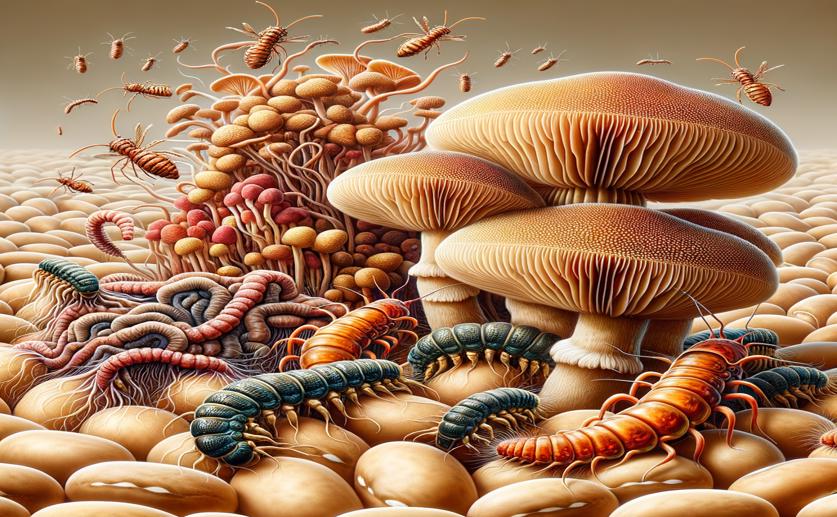
Natural Fungi Effectively Control Harmful Nematodes in Dry Beans
Greg Howard
11th August, 2024

Image Source: Natural Science News, 2024
Key Findings
- The study from North-West University in South Africa explored using local fungi to control harmful nematodes in dry beans
- Trichoderma ghanense and Talaromyces minioluteus were the most effective fungi, significantly reducing nematode populations
- Adding compost enhanced the fungi's effectiveness, likely due to improved soil health and microbial activity
References
Main Study
1) Bio-control efficacy of selected indigenous nematophagous fungi against Meloidogyne enterolobii in vitro and on dry bean (Phaseolus vulgaris L.)
Published 10th August, 2024
https://doi.org/10.1007/s10123-024-00571-1
Related Studies
2) Chemical Nematicides: Recent Research Progress and Outlook.
3) Trichoderma atroviride as a promising biocontrol agent in seed coating for reducing Fusarium damping-off on maize.
4) Plant-Parasitic Nematodes and Food Security in Sub-Saharan Africa.
5) Reproduction of Meloidogyne enterolobii on selected root-knot nematode resistant sweetpotato (Ipomoea batatas) cultivars.



 16th July, 2024 | Jim Crocker
16th July, 2024 | Jim Crocker